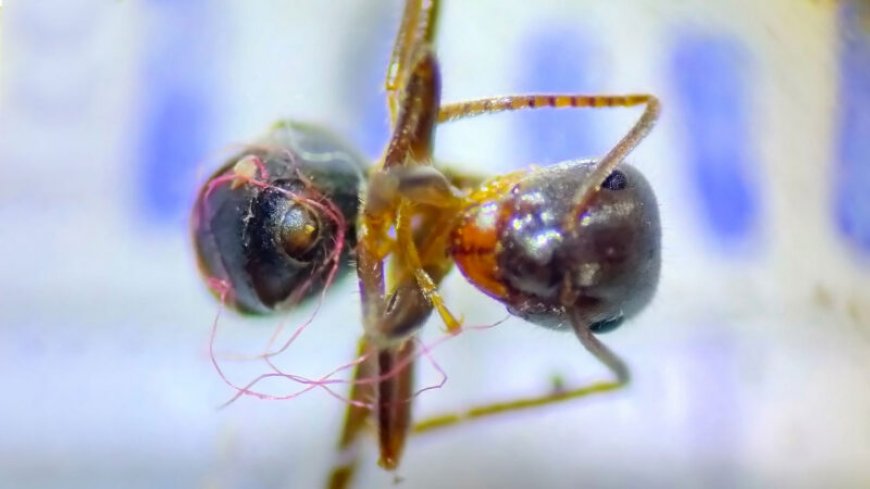Ants may be the first known insects ensnared in plastic pollution
At this point, it’s unclear whether this type of trash harms insects, but the discovery highlights the ubiquity of plastic pollution in the wild.

Some Canary Island ants have picked up an unwelcome stowaway — plastic waste.
Plastic entanglement is commonly associated with aquatic and ocean life. Finding plastic-wrapped ants suggests that humankind’s pernicious polymer pollution affects a wider range of wildlife than previously thought, researchers report September 18 in Ecological Entomology.
Scientists noticed the tangled insects while studying 113 ants they’d collected from the volcanic island of La Palma. One Lasius grandis ant was ensnared in a thin, red fiber, while a Monomorium ant was wrapped in a black fiber. Chemical and physical analyses of the fibers, which were woven around the ants’ bodies and legs, revealed they were made of plastic.
Plastic waste is famously treacherous for seabirds and marine mammals, but it can cause problems for landlubbing animals too, clogging camels’ guts and killing songbirds (SN: 12/15/20; SN: 4/12/21). Scientists have also documented some insects interacting with plastics. Aquatic caddisfly larvae can use small plastic fragments to construct their protective body casings, says Bethanie Carney Almroth, an ecotoxicologist at the University of Gothenburg in Sweden who was not involved in the new research.
There’s little evidence of plastic binding up ants and other small land insects, though. The La Palma ants represent one of the first known examples of a plastic trash–entangled terrestrial invertebrate.
“These last 15 years, we have acquired enormous knowledge about what happens in marine ecosystems, but it is time to expand to other systems and species for obtaining a greater perspective,” says urban ecologist Álvaro Luna of the European University of Madrid.
The two ants, which Luna and colleagues collected from a pine forest and near the summit of La Palma’s volcano, may have picked up the plastic accidentally while foraging. Because the ants were still alive and mobile when captured, it’s unclear whether the plastic harmed them, Luna says.
Adjacent roads and hiking trails could serve as the fibers’ origins, the researchers suspect. Plastic particles can be carried long distances by the wind to remote areas like those in parts of La Palma where the team found the ants, says marine ecologist Melanie Bergmann of the Alfred Wegener Institute for Polar and Marine Research in Bremerhaven, Germany.
It’s possible that insects have been getting tangled in plastic for a long time and it’s just gone unnoticed. “The more we research, the clearer it becomes that plastic pollution is ubiquitous,” Bergmann says.
What's Your Reaction?


























































